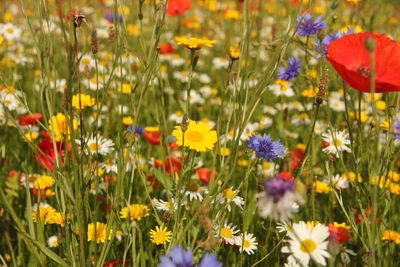Wildflower Growing in Zone 8
Consisting of both annual and perennial plants, wildflowers are plants that grow naturally without human assistance or intervention. To grow wildflowers for zone 8, it’s important to replicate their natural growing environment – sunlight, moisture, and soil type – as much as possible. All zone 8 wildflowers are not created equal. Some may need dry, sunny growing conditions while others are acclimated to shade or damp, boggy soil. Although wildflowers in their native environment grow without assistance from humans, wildflowers in the garden require regular irrigation during the first couple of years. Some may need an occasional trim. Keep in mind that some wildflowers may be rambunctious enough to choke out other plants in your garden. This type of wildflower should be planted where it has plenty of room to spread without limitations.
Selecting Zone 8 Wildflowers
Here is a partial list of suitable wildflowers for zone 8 gardens:
Cape marigold (Dimorphotheca sinuata) Black-eyed susan (Rudbeckia hirta) Blazing star (Liatris spicata) Calendula (Calendula officinalis) California poppy (Eschscholzia californica) Candytuft (Iberis umbellata) Bachelor’s button/cornflower (Centaurea cyanus) Note: prohibited in some states Desert marigold (Baileya multiradiata) Eastern red columbine (Aquilegia canadensis) Foxglove (Digitalis purpurea) Ox eye daisy (Chrysanthemum leucanthemum) Coneflower (Echinacea spp.) Coreopsis (Coreopsis spp.) White yarrow (Achillea millefolium) Wild lupine (Lupinus perennis) Cosmos (Cosmos bipinnatus) Butterfly weed (Asclepias tuberosa) Blanket flower (Gaillardia aristata)
